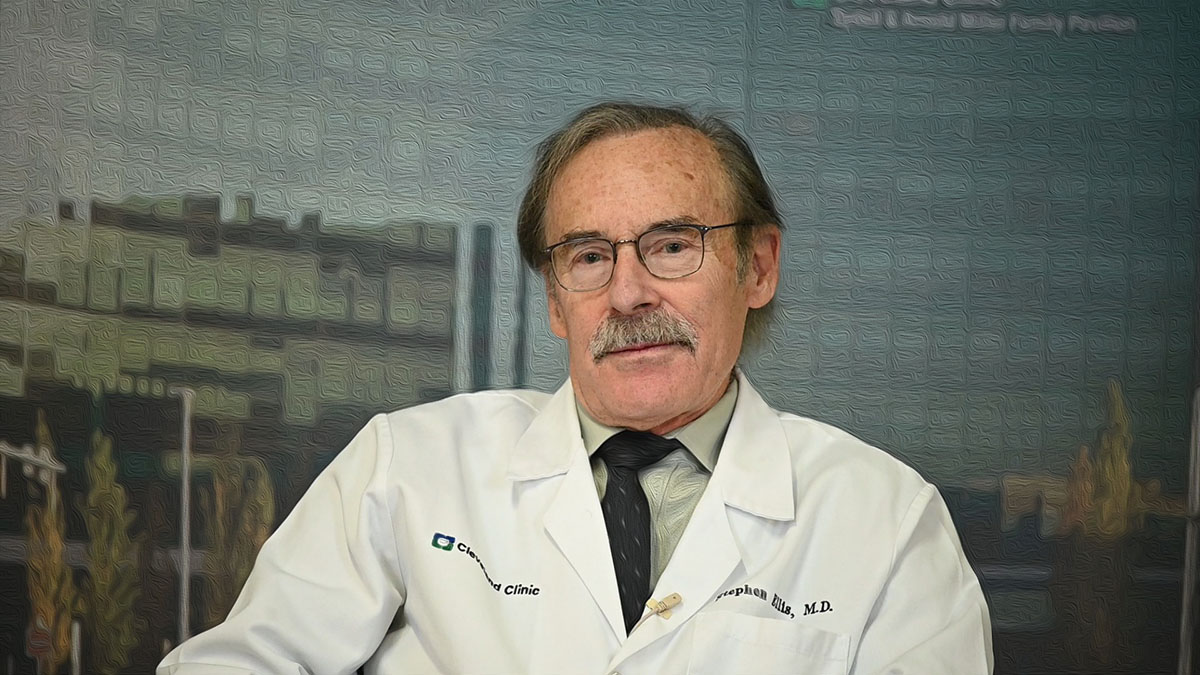What is Coronary Brachytherapy?

Coronary artery disease occurs when plaque builds up in the arteries that supply blood to your heart. One treatment option is coronary brachytherapy. Brachytherapy uses radiation to prevent scar tissue growth and keep your arteries open. Dr. Stephen Ellis provides an overview of coronary brachytherapy treatment.
Learn more about coronary brachytherapy.
Subscribe: Apple Podcasts | Podcast Addict | Buzzsprout | Spotify
What is Coronary Brachytherapy?
Podcast Transcript
Announcer:
Welcome to Love Your Heart, brought to you by Cleveland Clinic's Sydell and Arnold Miller Family Heart, Vascular and Thoracic Institute. These podcasts will help you learn more about your heart, thoracic and vascular systems, ways to stay healthy and information about diseases and treatment options. Enjoy!
Stephen Ellis, MD:
I'm Steve Ellis, director of Coronary Intervention here at the Cleveland Clinic, and I'd like to talk to you a little bit about the treatment of instant restenosis, particularly focusing on brachytherapy. Instant restenosis is the development of another blockage inside a coronary stent that's been placed, that occurs in about 4 percent of patients over the first year, so it's infrequent, but it does happen. The usual treatment at that point with one blockage is to place another stent or if the original stent was too small to simply expand that stent. That works a lot of the time, but not always, so it leaves us about one patient in a hundred that after a year to maybe a year and a half has recurrent instant restenosis. That is to say restenosis with two layers of stents.
At that point, the treatment paradigm gets a little more challenging because placement of a third stent is usually associated with putting too much metal in the coronary artery and further reblockage. So, the options at that point are to move on to bypass surgery, which sometimes is the right approach or to use a somewhat advanced therapy, and in the United States, the options here have been limited. The only currently available treatment is what we call brachytherapy, which is localized radiation for patients that have had regular stenting. Actually, the brachytherapy procedure is pretty similar. They don't feel any extra radiation that doesn't pose any extra risk, and the radiation is applied typically for five to 10 minutes after we optimize the expansion of the previously placed stent, and the patient goes home typically on what we call dual antiplatelet therapy, which is what they've typically been on before.
Soon in the United States, we may have another option, and that's called drug-eluting balloons or drug-coated balloons. These have been available in Europe for the past decade, and they're also used for the same indication. They haven't been approved in the United States because up until recently there hasn't been a US trial that shown them to be beneficial, however, at the TCT [Transcatheter Cardiovascular Therapeutics] meeting, the AGENT trial was presented, and in that study, patients who had either one or two stent restenosis were randomized to balloon angioplasty or the new drug-coated balloon, and the drug-coated balloon reduced the risk of reblockage from 28 percent to 18 percent. These results are very similar to what we'd be expected with brachytherapy, although there has never been a head-to-head trial of brachytherapy versus drug-coated balloons. In fact, we're actually trying to develop that trial right now. So, for patients that have this problem in the United States at this point in time, the options are typically bypass surgery or brachytherapy as described, but in the future, there'll likely be another option.
So, these are advances in the management of these patients, but for many, many patients, they provide years of benefit, but it is to be noted that brachytherapy has restenosis rates at three years that are considerably higher than what I just mentioned. They are somewhat dependent on the number of coronary stents that were placed previously. They run as high as 70 percent reblockage at seven years for patients with three layers, down to 40 percent to 50 percent with one to two layers. So, maybe that gives you an updated summary as to where we stand for the management of instant restenosis. For patients that are experiencing this problem, you can self-refer or have your physician refer you to the Cleveland Clinic. I should mention that there are only 45 centers that provide brachytherapy in the country, so we're happy to see you here.
Announcer:
Thank you for listening. We hope you enjoyed the podcast. We welcome your comments and feedback. Please contact us at heart@ccf.org. Like what you heard? Subscribe wherever you get your podcasts or listen at clevelandclinic.org/loveyourheartpodcast.

Love Your Heart
A Cleveland Clinic podcast to help you learn more about heart and vascular disease and conditions affecting your chest. We explore prevention, diagnostic tests, medical and surgical treatments, new innovations and more.


